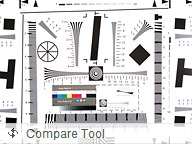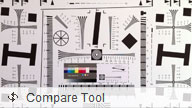HTC One (M8) review: One and only
One and only
Camera is still stuck at 4MP, but has a host of new features
The new HTC One (M8) has much the same camera as last year. It's based on the same 1/3" 4MP camera sensor with a 28mm wide F/2.0 lens. The sensor has an 16:9 aspect ratio and outputs a maximum 2688 x 1520 pixel resolution, while switching to the traditional 4:3 aspect ratio limits the maximum resolution to 2048 x 1520 pixels, or just over 3MP.
Selfies are a big thing for the HTC One (M8). The front snapper now has a 5MP sensor, coupled with a F2.0 wide angle lens. That puts the HTC One (M8) in the awkward position of being the first smartophone with a front snapper of higher resolution than the back one. It should tell you something about how big selfies have become as a use case. Furthermore, not only do you get a dedicated Selfie camera shooting mode in the camera UI, but you can also quickly change to the front snapper with a single vertical swipe across the screen.
The HTC One (M8) main camera however is accompanied by second camera on the back of the phone. It doesn't take any pictures, as it's a sort of a rangefinder. Its job is to create a depth map of your scene, which allows you to add high-quality rendered effects such as background blur (faux bokeh) or refocus your images after the shot. It can even allow for 3D-like photos with an extra layer of depth, which is visible when you tilt the phone (a parallax view).

Unfortunately, the optical image stabilization that the original HTC One enjoyed was not compatible with the dual camera setup in the HTC One (M8). Hence the new cameraphone only relies on digital image stabilization. HTC however claims, it's as good as last year's OIS.
The new image stabilization is made possible thanks to the new generation of HTC image processing chip - dubbed HTC ImageChip 2. It caters not only to image stabilization, but also makes sure you get sharper images with less noise and better overall quality.
The camera also has a new autofocus system, allowing for faster than ever performance.
The HTC One (M8) also comes with a redesigned Dual LED flash (Smart Flash, as they call it). Much like the one on the iPhone 5s, it utilizes two LEDs in different colors (a warm and a cool one). The camera system can analyze the available scene light and by mixing and matching the temperature (the color of light) of the combined light output by the two LEDs, it produces more natural illumination for your photos.
A clever new accelerometer-based trick allows you to start the camera directly even while the phone is locked in standby. With the screen off and the phone in landscape orientation, pressing one of the volume key activates the camera.
All this sounds great, but we can't help but show less enthusiasm for primary 4MP camera, which HTC is reusing here.
Last year HTC hoped the bigger Ultrapixels on the 4MP sensor might offset the lower resolution and no matter what little chance they had back then, this year it's seems to be gone. The competition's cameras are simply too far ahead. High-quality 16MP and 20MP sensors can produce much more detailed images than even the best 4MP sensor and some of them already make clever use of pixel binning to produced higher quality lower resolution shots.

Indeed, bigger pixels (ultrapixels as HTC markets them) mean lower noise levels and usually, better dynamic range. But modern day cameraphones are already doing pretty well with noise levels and the best implementations of HDR modes can successfully offset the dynamic range advantages of the HTC One sensor.
The secondary rangefinder camera sounds gimmicky to us. While we're sure it does a fine job, the resulting faux bokeh generated by the phone is hardly convincing. It doesn't look much better or much more accurate than on cameraphones with a single camera setup. Also Sony's cameraphones have long been able of capturing stereoscopic images with a single camera and already all of Nokia, Samsung and LG offer selective refocus after the shot. So we're not quite sure that the trade-off for the OIS was quite worth it.
Camera interface
The HTC One (M8) camera interface has been redesigned in tune to the rest of the UI. As before, since default aspect of the still camera matches that of the videos - 16:9, you don't need to worry about framing different aspects on the same viewfinder.
You choice of shooting modes includes: Still camera, Video, Zoe camera, Selfie, Dual Capture (front and back camera simultaneously) and 360-degree Panorama. The Zoe Camera shooting mode records the necessary video and images to create the beautiful animated photo reels that you will find in the dedicated Zoe app.
The new thing about the Zoe Camera mode is that you can record videos longer than the default 3s if you like.
Image quality
Here are several full-resolution 4MP camera samples (16:9 aspect ratio). We are quite happy with the results. There is a noticeable improvement in daylight image quality over the original One. These are certainly the best 4MP photos we've seen. However we are not quite sure whether that would be enough for the HTC One to match its competitors this year. We have more camera shootouts planned ahead, so it would take some time to get back to you with a final verdict.



HTC One (M8) camera samples in 4MP (16:9 aspect ratio)
Here are more camera samples. These were accidentally shot in 4:3 aspect ratio so they essentially have been cropped to 3MP. The per-pixel quality however is the same as the 4MP images with an aspect ratio of 16:9.












HTC One (M8) camera samples in 3MP (4:3 aspect ratio)
Update: Yet more camera samples, these shot in our usual locations.
We also added the HTC One (M8) to our Photo quality comparison tool:



HTC One (M8) in our photo comparison tool
Here are two low light shots. We used the new flash for the second one.
The ones without flash came out at ISO640 and ISO500 respectively. At shutter speeds of around 1/15s we had few keepers due to camera shake. The lack of an optical image stabilization was evident. Detail is not as high as would have liked but there is very little noise.
The flash didn't provide the natural looking result we were promised. We would have to test that further on other (less furry) subjects that hopefully have some skin tones to pass a final verdict.



HTC One (M8) low-light camera samples: w/o flash (ISO640) • w/o flash (ISO500) • w/ flash (ISO125)
Special shooting modes
The HTC One (M8) is well capable of shooting HDR stills but we are not quite happy with the results. We've already reviewed several HTC models that use the same processing logic - the shadows get too bright as the expense of the highlights, which get overblown. The new HTC One certainly follows the same rulebook. We'll try and show you more HDR examples in the near future.
Update: more HDR shots:




HDR off * HDR on * HDR off * HDR on
The 360-degree Panorama is not as hot as we expected. Disregarding the unsuitable scene that we've picked, the resolution is too low (it's was varying but was less than 450px on all attempts we made).
Other than that the stitching is nice and relatively seamless and image quality is nice despite the low resolution.

360 degree panorama has low vertical resolution
Here is a nice example of the faux bokeh effect that the HTC One (M8) is able to produce. Unfortunately, not all samples turn out as good as this one.


UFocus photo effect: Before and After
To wrap up we've prepared a few demonstrations of the new image effects, which are made possible thanks to the dual camera setup. The last one is the stereoscopic image produced by the camera. When it's not on the phone, it doesn't look much different than the others.






Photo effects: Normal • UFocus • Foregrounder • Colorize • Seasons • Stereoscopic
Video quality
The HTC One can shoot videos at up to 1080p resolution at 30fps. The camcorder features continuous autofocus and you have the option to lock the focus during video recording, if it hunts too much in dynamic scenes.
Videos are recorded in MP4 format with AAC audio. The audio is recorded in stereo. The video bitrate is 19.6Mbps, which is about the same as the original One.
The videos come out nice and fluid and they are full of fine detail. Unfortunately, you can notice the shakiness caused by the lack of an optical image stabilization system.
There is an HDR option for the video, but we haven't had the time to test this one out.
Here is a FullHD video sample captured with the HTC One (M8) that we've uploaded to YouTube.
Here's also an untouched 1080p video sample (0:15s, 36.8MB) taken straight off the HTC One. You can also have a look at the HTC One (M8) in our Video compare tool.
Reader comments
- John
- 23 May 2024
- SHp
htc is working android 6.0 marshmallow
- David
- 19 Dec 2020
- IbI
You need to download NextRadio app on google playstore
- Billy blanks
- 27 May 2020
- XE$
I didn't see any radio facility in it. I need help please


















